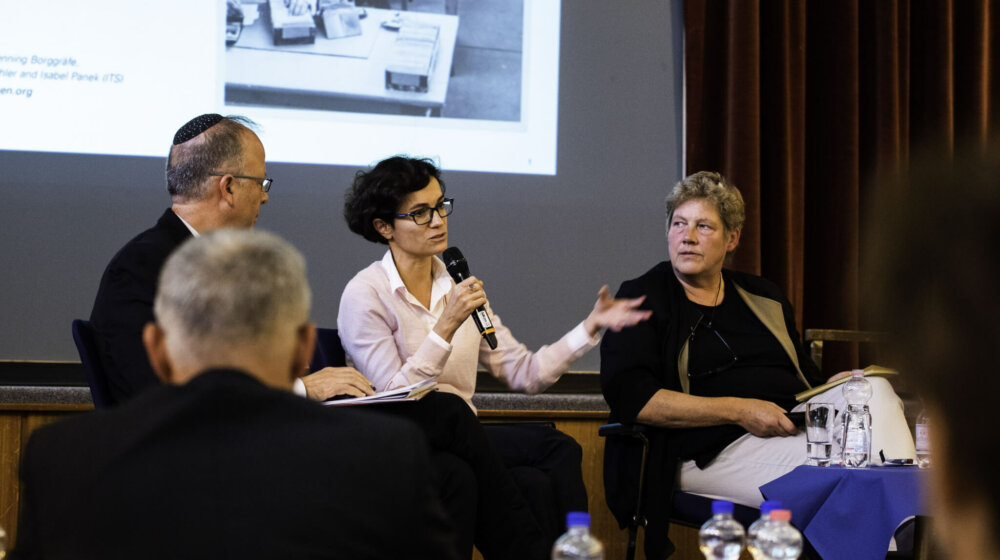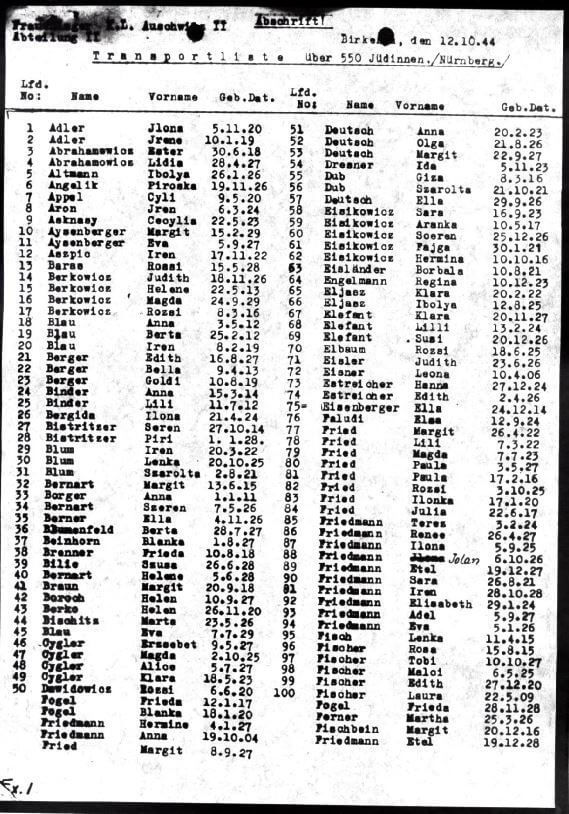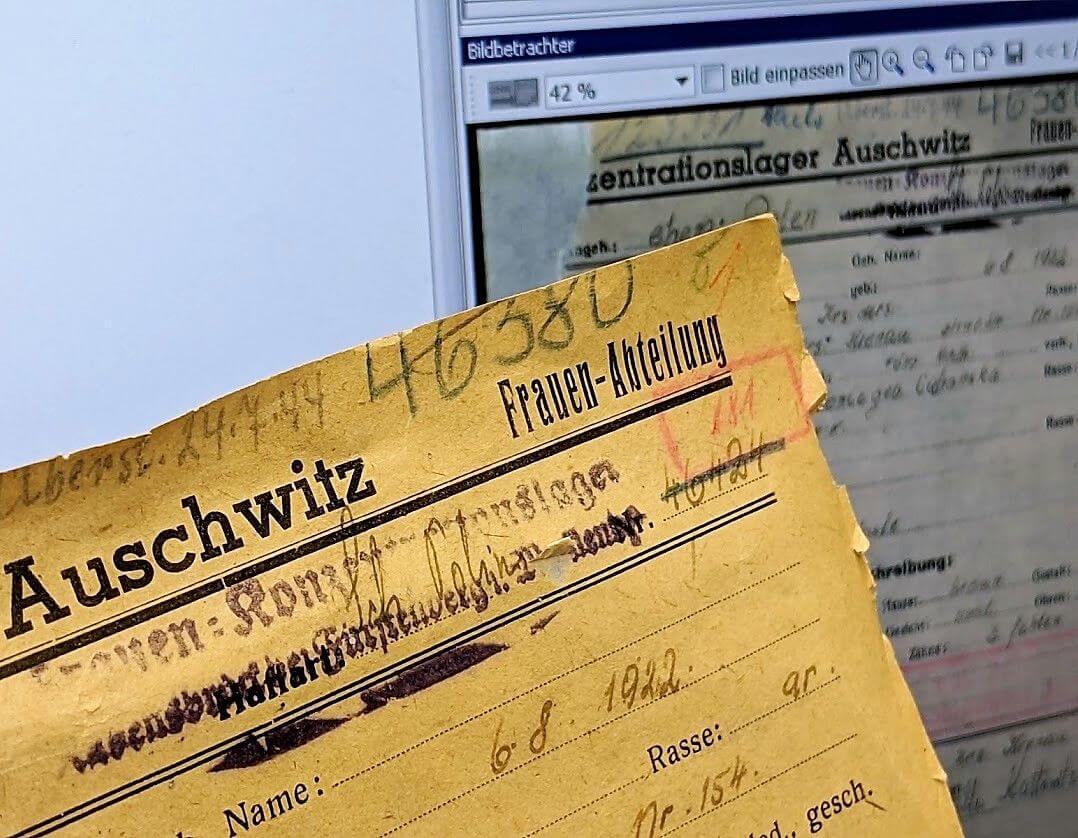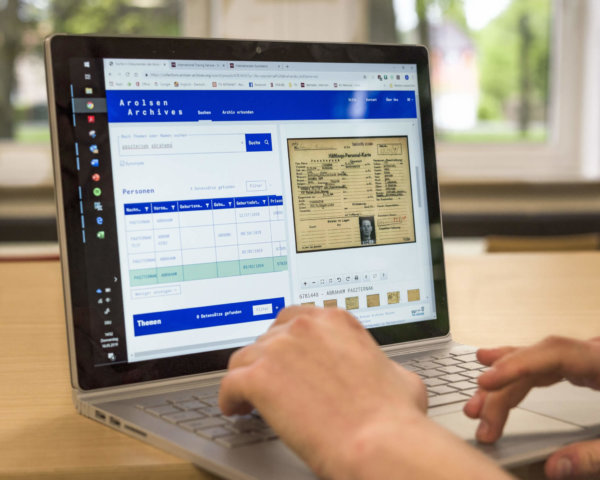Cooperative Partnerships Everyone Profits From

The documents in the Arolsen Archives must be stored on site in such a way as to protect them from outside influences. At the same time, our aim is to take the stories they tell – of millions of victims of National Socialism – out into the world. If they reach the victims, their families, scholars and interested persons of all generations, these stories can expand our knowledge and contribute to an open society. The institution doesn’t passively wait for people to come to it, but works actively toward the better utilization, expansion and increased renown of its online archive and its database. One means to that end is to establish and use cooperative partnerships.
Logging In to the Arolsen Archives
The introduction of remote access in 2018 was a huge step forward. The software permits access to the entire digital archive, which is otherwise accessible only to staff members or visitors within the Arolsen Archives network. The first partner to receive the login was the Auschwitz-Birkenau State Museum. That memorial has hitherto had information on just over half of the 400,000 registered concentration camp inmates. It is therefore especially interested in filling the gaps in the persecution stories of Auschwitz inmates with the aid of remote access. Within the framework of the partnership, the Arolsen Archives is receiving the newly ascertained data as well as high-quality scans of the originals in Auschwitz. At the end of the two-year project, the two institutions will publish the results on their websites and produce a joint publication.

»By means of remote access technology, we granted the Auschwitz-Birkenau State Museum access to our entire database. We designed the project in a manner that ensures benefit to both sides. And it went so well that other institutions have begun to inquire about similar cooperation. We’re definitely planning further partnerships, always in keeping with our own aims – to improve access or expansion by means of additional documents and links.«
Christian Groh, Head of Archives, Arolsen Archives


Prisoner card and transport list from the Auschwitz concentration camp.
Achim Link in conversation with Yad Vashem
What is the benefit of remote access?
Achim Link, head of IT: With remote access, it’s no longer necessary to travel to Bad Arolsen to carry out research in the entire database, which is equipped with more complex search functions than the online archive. What’s more, once the software has been set up, we can expand access to our database at will.
What’s the target group?
Achim Link: Primarily institutions and their users, possibly also school and university project groups. Naturally, we draw up contracts to regulate use, citation, etc. For our eleven partner nations, the technology would also be far more convenient than an annually updated copy of the database.
Does the remote access project mean that 2018 was a step forward for the digital strategy?
Achim Link: Yes, but also because of the text and document recognition in the indexing, the linking of place names in the archive holdings with geodata and the new digital workflows. But for the world’s largest archive on Nazi victims, those are basic needs. We have to go much further: network with more institutions, communicate interactively with our users and increase our online attractiveness.

Achim Link, Head of PRO+

Research in the Online Archives
Bringing in Knowhow
How do you publish holdings comprising some ten million scanned documents of many different kinds online? Until now, the Arolsen Archives has hired external service providers to present its documents in the online archive in a logical and user-friendly manner. For the publication of a core collection of documents from nearly all concentration camps and ghettoes, it is now embarking on a cooperative partnership with the Yad Vashem Memorial. That has advantages:
- Whereas it used to be necessary to export the data to external firms, Yad Vashem has already long had its own copy and is familiar with the holdings.
- The specialists were able to adopt the existing structure of the partner database and only had to adapt the user interface.
- The memorial is extremely well acquainted with the concerns of the Arolsen Archives, as the two institutions pursue common goals.
The collaboration thus contributes to publishing these large and complex holdings 1.1 in the internet faster, more easily, and at lower cost.

